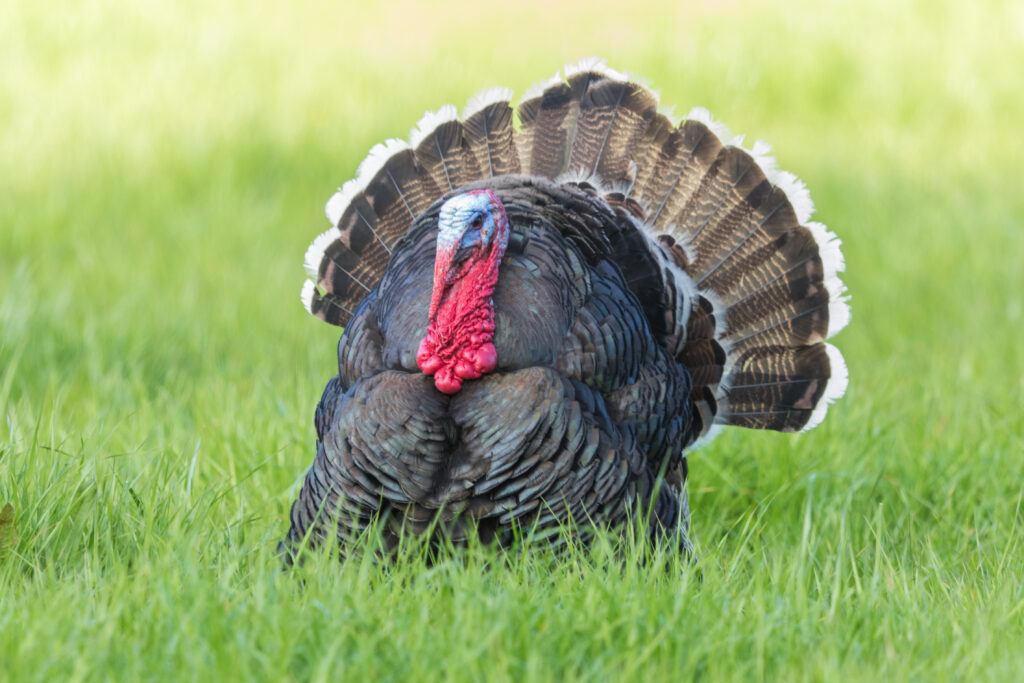As the first hints of spring are upon us, the allure of early season turkey hunting calls to all of us that have this particular obsession. This unique period offers not just the thrill of the hunt but a test of skill, patience, and preparation. Early season turkey hunting is not only exciting, but can be extremely challenging, inviting hunters to match wits with one of the wariest (and yet small brained) game birds in the wild. In this guide, we’ll explore the essential strategies, tips, and insights that pave the way to success in the field. Whether you’re a seasoned veteran or new to the turkey hunting scene, mastering the early season’s challenges can lead to both rewarding experiences and sustainable practices. Let’s dive into the world of early season turkey hunting, where every call, strategy, and step brings you closer to success in the field.
The early season is a period filled with promise. Turkeys are less pressured, more predictable, and engaging in vibrant social interactions, presenting ideal conditions for hunting. However, understanding the nuances of early season turkey hunting is crucial for success.

Preparing for the Hunt – Early Season Turkey Hunting
1. Gear and Equipment
Early season hunters face fluctuating temperatures and a mixture of dense or sparse undergrowth. Lightweight, layered clothing allows for adaptability, while a good pair of waterproof boots will keep you dry during morning dew. Your choice of camouflage should match the early spring foliage to blend seamlessly into your surroundings. Always have a good facemask and gloves….heads and hands moving always give us away…
2. Licenses and Regulations
Always start your season by reviewing local hunting regulations, season dates, and bag limits. This ensures not only a legal hunt but also contributes to turkey conservation efforts. You can easily visit the Department of Natural Resources website for your state, and there is typically an abundance of information available. For example, my home state is South Carolina and our site is shown here: https://www.dnr.sc.gov/wildlife/turkey/index.html
Scouting and Location Selection
Success in early season turkey hunting often hinges on thorough pre-season scouting. Look for signs of turkey activity such as droppings, feathers, and scratching in the dirt. Identifying roosting sites, feeding areas, and strutting zones can give you a significant advantage.

Techniques and Strategies
1. Calling Techniques
Early season calling should start soft and subtle. Turkeys are just beginning their social dynamics, and overly aggressive calling can spook them. A mixture of clucks, purrs, and occasional yelps can pique a turkey’s curiosity without alarming it.
2. Decoy Placement
Use decoys sparingly in the early season. A single hen decoy can be effective in drawing in a gobbler looking for its first mate of the season. Ensure the decoy is visible but not overly exposed to avoid making turkeys wary, which can be a natural tendency.
3. Camouflage and Movement
Early season foliage can be sparse, making camouflage even more critical. Minimize movement and use natural cover to your advantage when setting up or calling. Use trees to break up outlines and silhouettes and use brush to obscure potential movement.
…
Conclusion
The path to success in early season turkey hunting is not always formed in a straight line. It is not just about being in the right place at the right time; it’s about preparation, understanding, and respect for the game and its habitat. Success comes from the synthesis of knowledge, skill, time in the woods, and right place….right time.
Preparation is paramount. From selecting the right gear to familiarizing yourself with the hunting terrain, every detail matters. Your efforts in scouting and understanding turkey behavior will lay the foundation for your strategy in the field. Remember, the early season offers a unique window into the turkey’s natural rhythms—capitalize on this by refining your calling technique, choosing your hunting spot wisely, and setting up your decoy with intention.
However, what truly distinguishes a successful hunter is the ability to adapt. The early season is full of variables, from shifting turkey patterns to unpredictable weather. Stay observant, be flexible in your approach, and don’t hesitate to change tactics if the situation calls for it.
Above all, respect for the turkey, for nature, and for the hunting tradition itself is what sustains this sport. Ethical hunting practices not only ensure the preservation of turkey populations but also enhance the quality of the hunting experience for everyone involved. By adhering to regulations, practicing safety, and approaching each hunt with a conservationist’s mindset, you contribute to the enduring legacy of turkey hunting.
In conclusion, the successful early season turkey hunter is one who blends preparation with patience, skill with adaptability, and passion with respect. And…. sometimes, we all get the good fortune to stumble upon a gobbler who beelines straight to you on your first cluck, 5 minutes after you stepped out of the truck…

